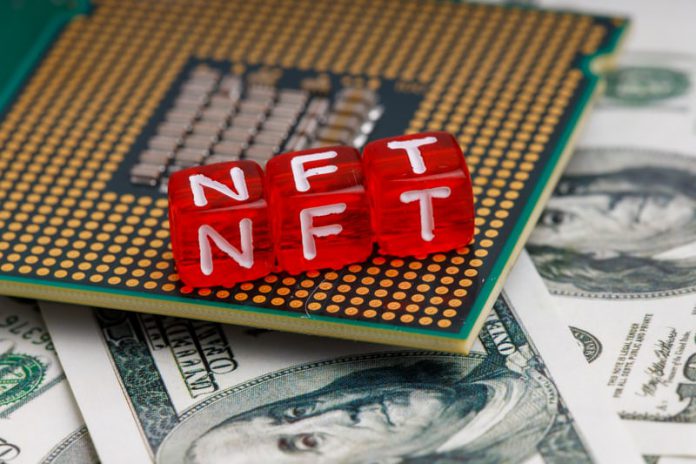The growth of non-fungible tokens (NFTs) has been stratospheric over the past two years, with the market showing no signs of slowing down in 2022. After recently hitting a $41bn value at the end of 2021, the number of prying regulatory eyes on the industry are growing. Will this be the year we see wholesale regulation on NFTs?
The NFT market is currently riding the crest of a huge wave. A wide range of high-profile celebrities have joined in on the craze, with Paris Hilton, Snoop Dogg and Lindsay Lohan all selling their own NFTs for huge amounts of money. However, as the cryptocurrency market has found out more recently, with more interest comes more oversight by authorities.
What is an NFT? NFTs are cryptographic assets on a blockchain that have unique identification codes and metadata that distinguish them from each other. They differ from cryptocurrencies in that they cannot be traded or exchanged at equivalency for commercial transactions.
Despite the rise of NFTs, the regulation around them is hazy. While there is an opportunity that regulation of NFTs may be caught explicitly by the EU Markets in Crypto-Assets Regulation, they are not currently regulated.
Is regulation coming? According to Compliance Solutions Strategies executive director Keith Markets, this is likely. He said, “Cryptocurrencies and NFTs remain relatively new stores of value. How many people knew ahead of time that NFTs could also become unique blockchain authenticated creations? When I asked someone I knew who is digitally creative if they would buy an NFT, they responded that they want to make one and sell it.
“If investors are willing to pay substantial sums for certain NFTs sold in markets with dealers, regulators likely will find reason to regulate. Crypto-related fraud of seniors and elderly has been on the rise and NFT-related fraud will happen, too. Some regulation is needed to combat such fraud but it remains unlikely that there will quickly be regulation of NFTs beyond the related financial transaction and transfer of ownership.”
Preparation is key
As previously underlined, the regulation surrounding NFTs is not easily understood, chiefly due the token’s inability to be used in a commercial transaction. Wolfgang Berner – CTO and co-founder of HAWK:AI – believes that as the NFT market gains momentum, participants need to be aware of and prepared for stronger regulation and potential enforcement actions within the field of anti-financial crime.
He remarked, “Does existing NFT regulation exist? Yes and no. Based on the latest Financial Action Task Force (FATF) guidelines, NFTs defined as collectibles may not be directly affected by AML regulation. The FATF stresses, however, that not the name but the usage of NFTs is important. As long as NFTs are potentially used for payment, storing of value, or investment purposes, they should be covered by AML regulation.
“As current usage highly suggests such purposes, market participants should review their current AML prevention programs to avoid heavy enforcement actions. One example was of enforcement was against BitMex, where FinCen recently imposed US$ 100 million in fines onto the crypto exchange.”
Has the time come for regulation? Berner said there are two answers to such a question. The first is that NFTs have no dedicated regulatory framework, and bearing the risks of potential money laundering and fraud, this should be rectified the soonest. However, the second answer is that NFTs may already be covered by existing AML regulations based on their usage. While the industry waits for regulatory and judicial clarity, Berner claims market players and financial institutions should pre-empt formal regulation with internal AML and fraud programs.
Elsewhere, the US Department of Justice’s Office of Foreign Assets Control (OFAC) already enforces the evasion of sanctions laws by market participants holding and trading sanctioned NFTs. The office recently sanctioned Chatex – a Latvia-based cryptobank – for engaging with the Russian darknet marketplace Hydra. The consequences of such breaches ‘are substantial and life-threatening for any organisation’, Berner claims.
He continued, “Market participants should ensure they don’t engage in any activity connected with sanctioned parties and related blockchain addresses. Entities outside the US should be aware that sanctions regulations not only apply for US entities but worldwide, as long as an entity has a so-called US nexus.”
What key factors should regulators considering when designing AFC regulation for NFTs? In the eyes of Berner, regulation and enforcement of NFTs is driven by three key factors. The first is the exponential increase in revenues, with the further anticipated growth in numbers making the issue for regulation ever more important. The second is that NFTs, in their different forms, bear certain risks – such as the subjective value of the object the NFT represents, and hence the transfer of value it allows when it comes to money laundering, terrorist financing and financial sanctions evasion. With increasing market size, such risks will increase significantly.
The third key factor highlighted was that in NFT-adjacent fields of regulation, such as the Crypto ecosystem, they also face increasing regulation that will eventually spill over into the NFT ecosystem.
Berner concluded, “Regulation of any area that could potentially benefit financial crime is important, but financial institutions should not wait for regulation to force their hand. Using existing AML/Fraud regulation as a baseline, financial institutions should consider how existing programs, and planned updates, can handle NFTs. After all, they are another one of the many innovations that change consumer behaviour in the global financial system.”
Regulation development
Despite being in a notable form of existence since at least the mid 2010s, NFTs are relatively young in regard to being a valuable part of the market – seen by their inability to be transacted in a commercial payment.
According to Peter Sherwood – associate at Zeidler Group – while NFTs can said to be in their relative infancy, the next step in the evolution of NFTs is the ‘tokenisation’ of physical assets and then using these NFTs to prove ownership and enable the transfer of these physical assets. Sherwood believes such a development will likely lead to much wider usage of NFTs.
He added, “It would seem appropriate for regulation that applies to NFTs to be developed alongside the currently expanding corpus of regulation and proposed regulation applicable to other crypto-assets and service providers in the digital asset space.”
Sherwood also cited that it was worth bearing in mind that the proposed regulation of the European Parliament and the Council on Markets in Crypto-assets and amending directive (MiCA) 2019/1937 does not mention NFTs but rather references three main categories of token – asset-referenced token, e-money token and other cryptoassets. He mentioned there is a question as to the extent of the applicability of MiCA to NFTs, claiming it is likely an NFT would fall into the category of ‘other crypto assets’, meaning that an issuer of an NFT would be considered to be an issuer of other crypto assets in accordance with MiCA and would be required to comply with certain governance and conduct of business obligations.
Sherwood concluded, “Omitting to establish regulatory frameworks around NFTs at an EU level alongside or within MiCA could be seen as a missed opportunity and lead to a patchwork of regulations across the different EU Member States. Such an occurrence would certainly be another stumble in the capital markets union.”
Copyright © 2022 RegTech Analyst
Copyright © 2018 RegTech Analyst






